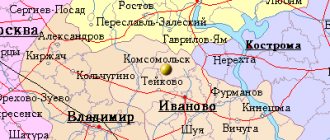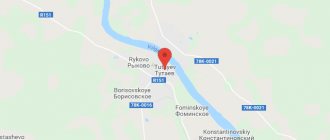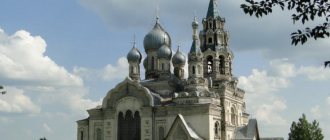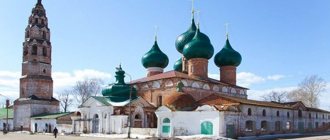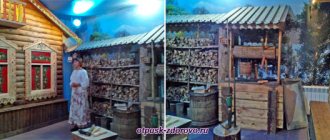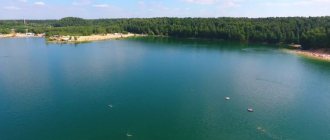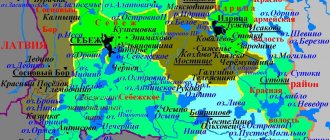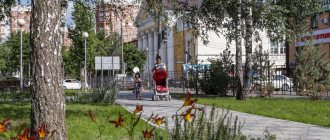Year of foundation: 1010
Yaroslavl on the threshold of the millennium
Yaroslavl
- an ancient Russian city, the center of the Yaroslavl region of the Russian Federation, located at the confluence of the Volga and Kotorosl rivers.
The city was founded in 1010
Yaroslav the Wise as a fortress to protect the northeastern borders of Rus'. It was the first Christian city on the Volga. In 1238 it was plundered and burned by the Mongol-Tatars. In 1463, Yaroslavl became part of the Moscow state. The state treasury was transported here in case of danger.
During the struggle against the Polish-Lithuanian intervention, Yaroslavl became the capital of the state for several months. However, in the fall of 1608 the city was captured by the Poles and Lithuanians.
In 1692 it became the property of the reigning house. By the 18th century, Yaroslavl was second only to Moscow in terms of population, and second only to Moscow and Kazan in terms of trade turnover.
Under Peter I, the first manufactories were created in Yaroslavl. By the end of the 18th century, 70 industrial enterprises operated in the city. The first public theater in Russia appears in Yaroslavl. In 1796, Yaroslavl became the center of the province.
In 1870, a railway was built connecting Yaroslavl with Vologda, Kostroma, and St. Petersburg.
In 1936, the Yaroslavl region was formed. During the years of Soviet power, the city became a major center of mechanical engineering, chemical, oil refining and light industry.
By decree of the President of the Russian Federation dated July 2, 2022, Yaroslavl was awarded the honorary title of Russian Federation for the significant contribution of city residents to achieving Victory in the Great Patriotic War of 1941–1945, ensuring uninterrupted production of military and civilian products at industrial enterprises, and for the massive labor heroism and dedication shown. Federation " City of Labor Valor"
"
The Holy Vvedensky Tolga Convent (Photo: V. Prokofiev) The historical center
of the city has been one of the 23 UNESCO World Heritage Sites since 2005. The oldest building in the city is the Transfiguration Cathedral of the Spassky Monastery. The Church of Elijah the Prophet, the architectural ensemble in Korovnitskaya Sloboda, attracts attention; other temples of Yaroslavl, as well as its museums and parks, are also interesting.
Nowadays, Yaroslavl is one of the leading links of the “Golden Ring” - the world famous tourist route of Russia. Yaroslavl today is an open-air museum, which houses about 800 state-protected architectural monuments.
Interesting Facts
In the Spassky Monastery of Yaroslavl at the end of the 18th century, the only surviving copy of “The Tale of Igor’s Campaign,” a monument of ancient Russian literature, was found.
Yaroslavl and the sculpture of the city's founder can be seen on the Russian 1000 ruble banknote.
The city has a population of about 600 thousand people (as of 2022).
Day of the city
in Yaroslavl it is celebrated on the last weekend of May. But in 2021, the celebration has been postponed to September.
Basic information
Modern Yaroslavl is, first of all, a center of tourism, an ancient Russian city, the history of which dates back a thousand years. Until now, the year of Yaroslavl’s founding is a subject of debate between historians and archaeologists. Excavations on the banks of the Volga are ongoing, which provides new information for thought. Officially, the year of foundation of the city of Yaroslavl is 1010. It was on the basis of this information that the 1000th anniversary of the city was celebrated in 2010. Today it is a major trade and transport hub, which is due to its geographical location. The most developed industries: oil refining, mechanical engineering, chemical industry.
Street names of Yaroslavl and intracity toponymy
Yaroslavl is a noble street. Old postcard.
When talking about Yaroslavl, the history of the name of the city, city toponyms and geographical names in its vicinity, one cannot help but pay attention to one fact. Yaroslavl is one of the oldest Russian cities with a rich, centuries-old history, with characteristic natural features. However, looking at a modern map of Yaroslavl, you will not find on it a sufficient number of old and figurative ancient names that arose in previous centuries or given in memory of the past (as, for example, in Moscow). The intracity toponymy of Yaroslavl is mainly modern in nature: Narodny Lane, Sovetsky Lane, Revolyutsionnaya, Pervomaiskaya, Deputatskaya, Bolshaya Oktyabrskaya, Shkolnaya, Kooperativnaya Streets, Svoboda Street, Respublikanskaya Street, Truda Square, Malaya Proletarskaya and Malaya Khimicheskaya Streets. In Yaroslavl there are also names that carry linguo-historical information directly related to the earlier history of the city: Nekrasov Street, Gorodskoy Val Street, Melnichny Lane, Yamskaya Street, Matrossky Spusk Street, Suzdal Street and others. Standardization of intracity toponymy is a widespread phenomenon; this especially attracts attention in ancient Russian cities. In our opinion, the question of naming and renaming streets, squares, etc. in such cities and towns requires serious analysis. Perhaps it is necessary to speed up work on an official document regulating the assignment of new names to intra-city objects (existing instructions relate only to the names of settlements themselves and other geographical objects). Linguists, historians, and geographers could also participate more productively in the work on such a document (and its appendix).
Geographical position
The founding place of Yaroslavl is the bank of the Volga, or rather the “arrow”, a high coastal cape. The Kotorosl River, formed by the connection of the river. Vexa and R. The mouth flows into the Volga on the East European Plain, in its central part. The Volga region in the Yaroslavl region is rich in water resources, 240 rivers and small streams, merging with each other, form an extensive network that was used to deliver various types of goods. The Vexa and Kotorosl rivers formed part of the great Volga route and connected Rostov Lake, Klyazma, Oka with the Volga. This water system was called the path from the “Varangians to the Arabs”; it made it possible to maintain trade relations with the Arab East, Scandinavia, and Khazaria. The development and settlement of the Volga began to play a big role in the development of relations with neighboring states; thanks to these prerequisites, the founding of the city of Yaroslavl became possible and necessary. This was the first Slavic settlement on the Volga. The Kotorosl River was the only water artery connecting the western part of Rus' with Rostov. Between Yaroslavl and Rostov, the waterway was the main one for many centuries, before the construction of the railway.
The place where Yaroslavl was founded was not chosen by chance: if you study the topography of the area, you can see that it is difficult to find a more convenient location for the fortifications. The settlement was securely closed on three sides by natural barriers. The Volga and Kotorosl cut off the city from the main territory of the plain, the Bear Ravine (previously one of the channels of the Kotorosl River flowed through it) was impregnable for attack from a third party. The defenders of the fortress had to fortify the only accessible route into the city. In fact, the “arrow” was an island in the middle of a body of water.
What happened before and what we know from the chronicle
Painting by artist Maksimov “Enemy under the Walls”
The Mongol campaign to the west began in 1235. More than a dozen Genghisid princes with their personal forces took part in it under the overall command of Batu Khan. Volga Bulgaria fell under their pressure in 1236. Then the Mongols fought with the Cumans and Alans, and in the late autumn of 1237 they moved towards Russian lands.
There was no unity between the Russian princes. Ryazan fell first, because no one responded to the call of the Ryazan prince to confront Batu together. Grand Duke Yuri Vsevolodovich of Vladimir tried to stop the enemy near Kolomna, but was defeated - the forces were too unequal. Then he sent letters for help to his relatives, appointing a general gathering place for the squads near the Sit River. Prince Vsevolod Konstantinovich, who ruled in Yaroslavl at that time, also responded to his uncle’s request.
Yaroslavl remained guarded by a small detachment. Women, children and old people took refuge behind the city walls. What happened next in Yaroslavl is not specified in the chronicle. Only the result is known: the Mongols took eastern Rus', the Russians lost the battle on the Sit River, the Vladimir and Yaroslavl princes were killed.
Prerequisites for the occurrence
The year of Yaroslavl's founding is still a matter of debate. Settlements existed on this site before. But the prerequisite for the emergence of a fortified point was constantly expanding trade relations. The use of the Volga as the main waterway of the region led to a large number of merchants equipping their ships with rich goods and sailing them along the river. At the most convenient points on the river banks there were small settlements of robbers who robbed merchant ships. On the spit, located between the Volga and Kotorosl, there was just such a settlement. From the point of view of military strategy, the place was ideal for both robbers and the squad guarding the borders of the principality. When settling and strengthening this territory, the settlement was given the name Yaroslavl. The history of the founding of the ancient city is connected with the Prince of Kyiv Yaroslav. In the first centuries of its development, the city was initially a fortified area, which made the route to Rostov the Great safe. Therefore, the year of Yaroslavl’s founding as a “fortified settlement” is still a mystery.
Historical and cultural significance of Yaroslavl
Yaroslavl in 1731 - a forest of temples
Back in the 11th century, here, at the confluence of the Volga and Kotrosli, a fortress was built to protect the approaches to Rostov the Great. The ancient walls of the Spassky Monastery witnessed the selfless and cruel battles of the Russian people with the Horde invaders. The militia of Minin and Pozharsky flocked to this city to liberate Moscow. In Yaroslavl, one of the lists of pearls of ancient Russian literature was found - “The Tale of Igor’s Campaign”. The name of this city on the great Russian Volga River is associated with many biographical facts and works of outstanding figures of Russian culture: the founder of Russia’s first publicly accessible national theater - actor, director and playwright F. G. Volkov, folk poet N. A. Nekrasov, dear to the Russian heart, poet-democrat L.N. Trefolev, sculptor A.M. Opekushin, singer L.V. Sobinov, artist A.I. Savrasov. The role of the city in the life of Russia is also great. To tell about the history of the city, the origin of its name, we need to look into the distant past of the country, open its pages, where chronicle evidence coexists with a large number of folk tales and legends.
Background
Based on archaeological excavations, it can be argued that on the territory of modern Yaroslavl there was an ancient settlement dating back to the 1st millennium BC - the era of the beginning of the Iron Age. But there were earlier settlements at this place, which date back to the 3rd-5th centuries. The founding of the city of Yaroslavl dates back to the 10th-11th centuries; until this point, the Volga region was inhabited by Finno-Ugric peoples. The gradual resettlement of the Slavs to this territory begins in the 8th-9th centuries. At the same time, many archaeologists emphasize that colonization took place without violence. The Slavs coexisted peacefully with the Merya people, and for some time the tribes practically united. In the year of Yaroslavl's founding, the banks of the Volga were quite densely populated; there is information about several villages whose residents were engaged in fishing and crafts.
A.K. Savrasov and Yaroslavl
Many remarkable facts from the biography and creativity of many outstanding figures of Russian culture are associated with Yaroslavl. Probably not many people know that in Yaroslavl, on the Volga, the great artist Alexey Kondratyevich Savrasov worked on the painting “The Rooks Have Arrived” (and on many other canvases). It would seem that A.K. Savrasov spent little time in Yaroslavl - only a few winter and spring months of 1870-1871. But for the artist this period in his work was very fruitful. Here he painted the famous paintings “Volga”, “Flood of the Volga near Yaroslavl”, “Grave on the Volga”. Here he created several studies of “Rooks”. Analysis of the sketches shows that A.K. Savrasov spent a long time looking for the most correct composition and color solution for the painting. One of the first sketches was written on the then outskirts of Yaroslavl, called Vspolye. The Vladimir Church served as the backdrop for the tree with nesting rooks. It meant “edge of a field” and “an open place in front of the walls of a city or settlement.” In the second meaning, the word vpolye is repeatedly found in written monuments. For example: “And those people of Saltykov or Lukvitsa... with all the people who will be sent with them, having gone out of town, stood in the open, where it is more convenient” (1517) (Quoted from: Dictionary of the Russian Language of the 11th-17th centuries, vol. Z. M., 1976, pp. 144-145). The word “vspolye” is also mentioned in V.I. Dahl’s dictionary: “Vspolye - edge, outskirts, beginning; pasture, a place around the outskirts" (See V.I. Dal. Explanatory Dictionary..., vol. 1, p. 269)
History of origin
There are many stories surrounding every ancient settlement. This is due to the lack of specific information; information must be drawn from legends and chronicles, which are more like fairy tales and contain a lot of fiction. Yaroslavl is no exception in this sense; the ancient history of its origin leaves considerable scope for imagination. With confidence, many archaeologists and historians can only say that Yaroslavl was founded by Yaroslav the Wise. This is indirectly confirmed by the name of the city. Many archaeological finds dating back to that time do not deny this version, but the main source of this statement is the monastery archives. The date of the founding of Yaroslavl, the place and its founder are described in the manuscript of the Archbishop of Yaroslavl Samuil Mislavsky that has reached us. The manuscript was published by priest Lebedev in 1877 and has been repeatedly analyzed by historians. It was published under the title “The Legend of the Construction of the City of Yaroslavl.” The text actually contains an ancient legend and was written in the 12th-11th centuries. According to researcher N. N. Voronin, the content of the “Tale” was updated several times, but the facts reached contemporaries in an undistorted form. There are also a number of other documents, the study of which continues to this day; for modern scientists this is a very interesting question - the founding of Yaroslavl. Versions and legends are not very diverse; they all directly or indirectly point to Yaroslav the Wise as the founder of the city. Therefore, its historical image should be studied in more detail.
Events of 1024 in the history of the city of Yaroslavl
When exactly did this happen? Perhaps this is one of the most complex and controversial issues concerning the ancient history of Yaroslavl. The construction of Yaroslavl is most often associated with the turbulent events of 1024 (See M. Morozova, S. Reipolsky. Yaroslavl. Yaroslavl, 1950; Yaroslavl. Essays on the history of the city. Yaroslavl, 1954). Yaroslav the Wise, drawn into an internecine struggle in the south with his brother Mstislav, was forced to deal with the affairs of the Suzdal land: “In the same summer, standing up to the left in Suzhdali, the old child beat the old child, saying that they hold gobinos (i.e. wealth, property , harvest - M.G., V.D.)… Yaroslav came to Suzdal, confiscating the Magi, and other shows” (See Complete collection of Russian chronicles. Laurentian Chronicle, vol. 1. L., 1926, stb. 175).
Yaroslav the Wise
The Grand Duke of Kiev was born in 978. Immediately after the birth of Yaroslav, his father gave him the Rostov lands to reign. The founding date of the city of Yaroslavl is 1010; it was during this period that the prince ruled the Rostov lands. It is difficult to say anything definite about this time of his life: the data has not been preserved. Reliable chronicle mention of Prince Yaroslav begins in 1010, and it is associated with the creation of a fortified city on the banks of the Volga. The further fate of the prince is connected with Novgorod, where he had been since 1011. After the death of his brother Vysheslav, Vladimir (the brothers' father), bypassing the eldest of his sons, placed Yaropolk in Novgorod, which at that time was a serious military and commercial center. The Novgorod squad was second in number only to the Kyiv squad, and the status of Novgorod as a city was significantly higher than Rostov. Yaroslav will go through a difficult path to the title of Grand Duke of Kyiv, who will unite the Russian lands and win the recognition of his people with a wise and enlightened rule. Yaroslav Vladimirovich received the nickname “Wise” only in the 19th century; descendants will appreciate his role in the formation of a united and powerful Rus'. His role in the formation of the city of Yaroslavl is almost undeniable, but also permeated with legends and tales. There are two main versions that have survived to this day, which are worth dwelling on in more detail.
Arrow of Yaroslavl - Fortress aka Chopped City
A new page in the biography of the city was opened with the advent of the 13th century. In 1215, Prince Konstantin Vsevolodovich founded the “chambers” on Strelka - the princely courtyard and the first stone church of the Assumption of the Virgin. One of the oldest monasteries in North-Eastern Rus', Spaso-Preobrazhensky (or simply Spassky), arose in Yaroslavl. Initially, Yaroslavl was, like most ancient Russian cities, a chopped wooden fortress. Therefore, the oldest part of the city, located on the Strelka, was called the Chopped City for a long time. Today we are reminded of this ancient and poetic name by the name of the church built in 1695 - St. Nicholas the Rubleny City, or simply the Church of St. Nicholas the Rubeny. Some researchers suggest that the name Chopped City could have stuck relatively late due to the opposition in the 16th century. Zemlyanoy city. In 1463, Yaroslavl became part of the unified Russian state. After this, further growth of the city's territory and its economic development began. Already in the 16th century. it surrounds its settlement with a high earthen rampart and a deep outer moat, hence the name Zemlyanoy Gorod (an interesting parallel with ancient Moscow, where, as we know, there was also a Zemlyanoy Gorod; there is also a Red Square in present-day Yaroslav). It is noteworthy that the administrative center of Yaroslavl was located on the territory of Rubleny Gorod until the end of the 18th century, when a “regular plan” of the city arose, according to which the center was moved to Ilyinskaya Square (later Sovetskaya).
The legend of the founding of Yaroslavl
Twelve years have passed since the baptism of Rus', but many settlements remained pagan. On the banks of the Volga, at the confluence of the Kotorosl River, the Medvezhiy Ugol settlement was located. According to the chronicle, the people living there were evil, “filthy of faith,” that is, pagans. They worshiped the idol of the god Veles (Volos). Not far from the settlement there was a sanctuary in which a sacrificial fire burned and there were wooden figures of idols. The inhabitants of Bear's Corner also worshiped animals, among which the bear occupied a key place. In a certain Volosovaya lair, sacrifices were made to the pagan gods, it is possible that they were human, which is why the inhabitants of the settlement are described as evil people. The main occupations of the residents of Bear's Corner were cattle breeding, hunting and fishing, and they received their main income from robberies of merchant ships sailing along the Volga. According to legend, the prince, then Rostov, Yaroslav sailed along the Volga with his retinue. He saw how residents of a local settlement were robbing merchant ships and came to the merchants to help. They thanked the prince, and the local residents, seeing the power of the Rostov squad, agreed to recognize him. At the same time, Bear Corner did not completely submit to Yaroslav; pagan rituals continued to be performed there. Yaroslav appreciated the convenient location of the settlement, from the point of view of the strategy for protecting Rostov and the lands surrounding it, so he decided to baptize the residents and build an outpost on the site of the Bear Corner. He returned with a retinue and numerous church servants, but the settlers were not going to so easily give up their gods, to whom they had prayed for centuries. As soon as the prince entered the settlement, a “fierce beast” and a pack of dogs were unleashed on him and his retinue. The animal was a huge bear - the supreme deity of the villagers. Yaroslav hacked the bear to death with an axe, but the dogs did not attack anyone around him. From that moment on, the prince ordered to cut down trees and build fortifications on the “arrow”. Later, Yaroslavl grew from this outpost, named after its founder.
Historical events and the Spaso-Preobrazhensky Monastery of Yaroslavl
Spaso-Preobrazhensky Monastery at the beginning of the 17th century (drawing by a modern artist)
For historians of Russian literature, as for any Russian person, the name of the city of Yaroslavl is associated with another important fact. At the beginning of the chapter, we mentioned that the Spaso-Preobrazhensky Monastery in this city on the Volga is one of the oldest Russian monasteries. Many people know the Spassky Monastery in Russian history. At least because the first theological school in the north-east of Rus' was created here, which had a large library for that time of thousands of handwritten books. Or the fact that Ivan the Terrible found shelter behind its walls when in 1571 the troops of the Crimean Khan Devlet-Girey approached Moscow. Or the fact that the walls of the monastery withstood a 23-day siege in the spring of 1609, during the struggle against Polish invaders. And on July 27, 1612, the people’s militia of Kuzma Minin and Dmitry Pozharsky left the walls of the Spassky Monastery for the decisive battle with the enemies entrenched in Moscow. But still, one fact from the history of the Spassky Monastery is especially dear to us. The only copy of the remarkable monument of ancient Russian literature, “The Tale of Igor’s Campaign,” was kept in the sacristy of the monastery. In 1795, Count A.I. Musin-Pushkin bought a number of valuable manuscripts from the former Archimandrite Joel Bykovsky. Among them, a famous collector discovered a list of “Words”... We have already mentioned the library of the theological school in the Spassky Monastery. In 1214, the school and library were transferred to Rostov. Unfortunately, the library's treasures burned down during one of the Rostov fires. It is possible that it was in the library of the theological school that the ancient manuscript “The Tale of Igor’s Campaign” was kept, from which in the 16th century. a list was made, subsequently acquired by Musin-Pushkin.
Second version
The Dyakovo settlement of Medvezhiy Ugol submitted to Yaroslav, the prince of the Rostov lands, and was baptized, but the sacred pagan beast (the bear) began to take revenge on its inhabitants. He wandered around the outskirts of the settlement and killed people who turned away from idolatry. Prince Yaroslav was hunting near Rostov. Having learned about the trouble of the residents of Bear's Corner, he hastened to help. Yaroslav himself entered into battle with the beast and defeated it. On his orders, the settlement was fortified with ramparts and ditches. And in the city itself, the first Orthodox church was built - the Church of Elijah - named in honor of St. Elijah after the date of the start of construction (August 2). At the site of the supposed foundation of Yaroslavl, to this day there lies a stone, which, according to historians, once served as part of the foundation of the church.
Coat of arms
The coat of arms of Yaroslavl is presented in the form of a French shield topped with the cap of Monomakh. A rising black bear is depicted on a silver background. The animal is turned to the left of the viewer. It holds a golden ax on its left shoulder with its front paw. The weapon is facing upward. It is allowed to reproduce the coat of arms without a headdress.
The artistic composition is included in the State Heraldic Register of the Russian Federation under No. 129. It goes back to the historical version. Adopted by decision of the municipality of Yaroslavl dated August 23, 1995 No. 35.
Yaroslavl, foundation stone
On the Volzhskaya embankment there is one of the most visited attractions of the city, which attracts not only many tourists, local residents believe in the magical powers that this historical rarity is endowed with. The foundation stone of Yaroslavl is covered in ancient legends and traditions; it is believed that it was from this place that the history of the city began. The first fortifications arose behind it, new churches and houses were built. The guides say that if you look closely at the stone for a long time, your imagination will draw pictures of antiquity: Prince Yaroslav and his retinue, master builders, artisans and hunters, the people who built this city. Residents of Yaroslavl attribute miraculous properties to the stone. According to them, it has special magnetism and can heal diseases. Numerous tourists throw coins, believing that their wish will come true. And this is not surprising: the stone lay in this place even before the founding of the city, it emanates antiquity and a fairy tale.
Yaroslavl is the birthplace of Nekrasov
Yaroslavl. Nekrasovsky Boulevard. Old postcard
And first of all, literary Yaroslavl, poetic Yaroslavl - this is Nekrasov. The Yaroslavl region essentially became the birthplace of the great Russian poet. As a three-year-old child, he was brought to his father’s family estate - the village of Greshnevo (now Nekrasovo), not far from Yaroslavl. At the age of eleven, Nekrasov entered the Yaroslavl gymnasium. And in his mature years, the poet did not break ties with the Yaroslavl region. He often came to Greshnevo for the summer, and in 1861 he purchased an estate in the village of Karabikha. We should tell you more about Karabikh... This simple Russian name has firmly entered the history of Russian literature. Here Nikolai Alekseevich Nekrasov lived for several months every year for almost fourteen years, creating his best works. Here the poet wrote the poems “Frost, Red Nose”, “Russian Women”, “Grandfather”, poems “Return”, “Kalistrat” and others. On Yaroslavl soil, Nekrasov drew inspiration and collected material for many of his works. It is no coincidence that Nekrasov’s excited lines are addressed to this very region: Again, my native side, With its green, fertile summer, And again my soul is full of poetry... Yes, only here can I be a poet! People coming to Karabikha visit the House-Museum of N.A. Nekrasov, getting acquainted with his biography and history of creativity, the question often arises: “What is the history of this place in Russia? Where does the name of the village and estate come from?” This question can and should be answered. The area in which Karabikha is located is associated with a number of historical events. So, during the period of internecine war in the second quarter of the 15th century. here battles took place between the troops of the Moscow prince Vasily the Dark and his rival, the Galician prince Dmitry Shemyaka, in the struggle for the great reign. Shemyaka's troops suffered a crushing defeat in 1435 in the battle near Karabitovaya Mountain. This is the name of the hill near Karabikha. Folk legend has preserved the memory of the battle, interpreting the meaning of the name of the mountain as the phrase “kara be there.” The name of the settlement and the mountain was apparently based on the dialectal Russian word karabit, meaning “to harrow arable land” (See V.I. Dal, Explanatory Dictionary..., vol. 2, p. 89).
Monuments
The year of foundation of the city of Yaroslavl is 1010, respectively, all stages of the history of the development of the Russian state have left their mark on it. The architecture of the city itself occupies a special place among the ancient monuments. It is appreciated by lovers of antiquity and is included in the UNESCO World Heritage List. If you study the historical center of Yaroslavl, you can conclude that it is an integral architectural monument that has been preserved thanks to competent adaptation to the modern life of the city. The total number of historical, architectural, art, and archeological monuments in the city is more than 700 units. These include temples and churches, ancient buildings, museums, monasteries, parks and sculptures. Of course, a special place among them is occupied by the monument to the founder of the city, Yaroslav the Wise. The city also immortalized all the great people who contributed to its formation and development. There is a monument to Fyodor Volkov, Nikolai Nekrasov, and the Demidov Pillar.
Yaroslavl and Emelyan Mikhailovich Yaroslavsky
The toponym Yaroslavl itself served as the basis for the emergence of some proper names. These include, for example, the pseudonym Yaroslavsky. Emelyan Mikhailovich Yaroslavsky (M.I. Gubelman) (1878-1943) - Soviet statesman and party leader, academician of the USSR Academy of Sciences, one of the leaders of the October armed uprising in Moscow. In modern Yaroslavl, the former Fedorovskaya Street, one of the main thoroughfares of the current Krasnoperekopsky district of the city, is named after Emelyan Yaroslavsky. The district was named after one of the largest enterprises in Yaroslavl - the Krasny Perekop industrial textile plant. It traces its history back to the former Great Manufactory, which arose back in the 18th century. On the site of a drained area of a once impassable swamp on the right bank of the Kotrosli, one of the largest linen manufactories of the Peter the Great era arose, which later became known as the Yaroslavl Great Manufactory. The factory received a new name - "Red Perekop" - in 1920 in honor of the victory of the Red Army in the south. In the Krasnoperekopsky district of Yaroslavl, a few old street names, such as Zelentsovskaya (along Zelentsovsky Stream), are adjacent to a large number of new ones: Stachek, Solnechnaya, Rabochaya, Trudovaya streets, etc.
Center city of Yaroslavl. General view on an old postcard
Our time in the ancient city of Yaroslavl has come to an end. The time has come to leave this ancient and picturesque corner of Russia.
Source: M. V. Gorbanevsky, V. Yu. Dukelsky - Through the cities and towns of the “Golden Ring”.
Modern city
Currently, Yaroslavl is considered the third largest city in central Russia. According to the latest data, its population exceeds 600,000 people. In parallel with the most profitable activities (tourism and trade), the city has a developed industry, transport network and housing and communal services. Given the wide possibilities of modern logistics (developed railway network, air routes), the Volga remains a popular transport artery; freight and passenger transportation is carried out on the basis of the river port of the city of Yaroslavl. Science is at the proper level; the results of research from several design institutes are being implemented in industrial production. Thanks to the developed industrial sector, new enterprises are being founded with the attraction of foreign investment. Yaroslavl continues to grow and improve, not forgetting about its great past and carefully preserving it.
Poet Trefolev and the street named after him in Yaroslavl
There is Trefoleva Street on the map of Yaroslavl. In its name, the residents of Yaroslavl perpetuated the memory of their fellow countryman, the poet-democrat L.N. Trefoleve (1843-1905); the poet lived on this street. Trefolev was also a good translator, editor, and historian of his native land. The poet firmly believed in the wonderful tomorrow of his homeland. This is evidenced by the following lines from his pen: A cruel century, a cursed century, I will hardly survive, I will not see the wonderful twentieth century in reality. Thanks to their melodiousness and simple and figurative language, many of L. N. Trefolev’s poems turned into folk songs. These are, for example, “Dubinushka”, “Song about the Kamarinsky peasant” and “When I served as a coachman at the post office” (this was Trefolev’s poetic adaptation of the poem “Coachman” by the Polish poet Vladislav Syrokomli).
LiveInternetLiveInternet
Moskvichka L_-_Marta
all posts by the author One of the oldest cities, Yaroslavl, is included in the eight main cities of the Golden Ring of Russia. The city was founded by Yaroslav the Wise, presumably in 998-1010. At that time, Prince Yaroslav the Wise owned the Rostov throne and made a lot of efforts for the prosperity and peace of his possessions.
Monument to Yaroslav the Wise, Yaroslavl, photo: 2do2go.ru
The places where the current city, Yaroslavl, is located belonged to pagan Finno-Ugric tribes who did not want to submit to Yaroslav and pay tribute to Rostov. There is a legend that the pagans, who considered the bear their patron, set the bear against the Prince. Yaroslav was able to cope with the beast and the pagans had no choice but to submit. An interesting fact is that the coat of arms of the city of Yaroslavl, approved in 1778, depicts this very animal - a bear holding a golden ax in its left paw. The ancient coat of arms reminds that the city of Yaroslav the Wise was founded on the site of the ancient pagan settlement “Bear Corner”.
For the first time in the chronicles of that time, Yaroslavl was mentioned in 1071. Due to a poor harvest, the Magi rebelled. Many Orthodox Christians were killed. These tragic events became the first record about the city.
In 1210, the first stone buildings appeared in Yaroslavl, and by 1218 it became one of the largest cities of the then Rus' and an independent principality, independent of anyone. By this time, the city of Yaroslavl was already famous as a cultural center. There were about two dozen Orthodox churches in the city (burned down in a fire in 1221).
In the Spassky Monastery, the only school opened so far for the entire Volga region. A library is being created at the Spassky Monastery, which includes 14 parchment manuscripts and a list, the only one of its kind, “The Tale of Igor’s Campaign.” The creator of the library is considered to be Konstantin Vsevolodovich (1205-1207 - Prince of Novgorod, 1207-1216 - Prince of Rostov, 1216-1218 Grand Duke of Vladimir), a lover and connoisseur of ancient books. The city has developed crafts and trade, which is important for the prosperity of Yaroslavl.
During the Tatar-Mongol invasion, the Yaroslavl princes tried as best they could to save the city. They resorted to diplomacy, paid tribute and, of course, accepted the fight. The battle on the banks of the City River in 1238, on Tugovaya Mountain in 1257, the Battle of Kulikovo in 1380 - this is a small part where the squads of Yaroslavl took part during the almost 300-year yoke.
Kulikovo field. Standing on bones. Artist P. Ryzhenko, Yaroslavl
In 1463, after the collapse due to civil strife between local princes who were unable to share power, the city was annexed to Moscow.
In 1555, the Moscow Company was founded (existed until 1917), which organized English-Russian trade through Arkhangelsk. And Yaroslavl becomes the largest center of transit trade along the Volga River.
Yaroslavl also played an important role in the Time of Troubles (1598-1613). False Dmitrys replace one another, the boyars cannot share power, and the Polish interventionists ruled the Moscow Kremlin. Yaroslavl residents join the first militia. But the attempt to liberate Moscow in 1611 did not lead to success. The second militia in 1612 reaches its goal - the Moscow Kremlin is liberated.
After the Time of Troubles, Yaroslavl retreated quite quickly. The city ranks second in size and third in terms of trade turnover in Russia. The lands between the Kotorosl and Volga rivers are being reclaimed and built up. In the 16th-17th centuries - the lands beyond Kotorosl.
The 17th century is considered the century of temple construction for Yaroslavl. By this time, the city became the second largest population in Russia, especially artisans. In the 17th century 3 monasteries and about 60 temples were built.
Spaso-Preobrazhensky Monastery, Yaroslavl, photo: september-t.ru
Under Peter I, Yaroslavl ceased to be the second city in the state.
Merchants go bankrupt, but trade is replaced by industrial development. In 1722, the country's first linen manufactory was built. By 1771, the number of large industrial enterprises reached 11.
In 1718, a digital school was opened, and 30 years later - the Yaroslavl Theological Seminary at the Spassky Monastery. And in 1750 F.G. Volkov founded a public theater in Yaroslavl, the first in Russia! True, two years later he moved to St. Petersburg.
Not a single tragic event in Russia has spared the city. But Yaroslavl, despite the difficulties, continued to grow and develop. In the 19th century, water supply, the first power station, electric lighting, and telephone communication with Moscow appeared. A railway was built that directly connected Yaroslavl with Moscow, St. Petersburg and Kostroma.
Yaroslavl, 19th century
In the 20th century, the Pushkin Library, the Yaroslavl Teachers' Institute, and the city's first cinematograph opened.
By this time, industry was quite well developed - 50 enterprises: sawmills, carpentry, match-making, vodka, bell-making, etc. But industrial development did not prevent Yaroslavl from becoming the most beautiful of the cities of the Volga region, as it remains today.
Many Museums, Temples, Monasteries, Historical and Cultural Monuments leave an unforgettable impression of visiting Yaroslavl.
Interesting facts about Yaroslavl
№1. Yaroslavl is considered the first Christian city on the Volga.
No. 2. During the years of Soviet power, the world's first synthetic rubber was produced in Yaroslavl.
No. 3. Yaroslavl gained worldwide fame with the flight into space on June 16, 1963 of the first female cosmonaut Valentina Vladimirovna Tereshkova. The mention of Yaroslavl is firmly established among the people, although this is not entirely true. Valentina Vladimirovna was born in the village of Bolshoye Maslennikovo, Tutaevsky district, Yaroslavl region. But the laurels went to the city, not the village.
On a charity trip around the Yaroslavl region, 1999
№4. The historical center of Yaroslavl is under UNESCO protection.
No. 5. Fun fact. The Yaroslavl regional newspaper “Severny Krai” first appeared in 1898, and in 1905 it was closed for opposition publications and criticism of the authorities. However, the newspaper staff continued to publish it, constantly changing its names, in which the word “Northern” almost always remained: “Northern Newspaper”, “Northern Rumor”, “Northern News”, etc. — in just 4 years, 42 names were changed.
No. 6. For Yaroslavl, one of the most important historical architectural monuments is the Transfiguration Cathedral. Its meaning is approximately the same as for Moscow - the Kremlin.
No. 7. At the end of the 16th century, Rurik family, the holy noble Tsarevich Dimitry of Uglich, the youngest son of Ivan the Terrible from Maria Feodorovna Nagaya, his sixth or seventh wife (illegitimate), suffered martyrdom on Yaroslavl land... The Tsarevich lived only 8 years. Today he is one of the most revered Russian saints. The cause of death was more than mysterious. According to one version, he was stabbed to death by rebels, according to another version, he died in an accident while playing “knives” with his peers...
Another curious fact is connected with his tragic death: the excited crowd, who raised the alarm, allegedly tore to pieces the alleged killers of the prince. Subsequently, by order of Vasily Shuisky, the bell, which served as an alarm, had its tongue cut off (as a person), and he, along with the Uglich rebels, became the first exiles to the newly founded Pelymsky prison. Only at the end of the 19th century was the disgraced bell returned to Uglich. Currently it hangs in the Church of Tsarevich Demetrius “On the Blood”.
No. 8. In 1918, a major uprising against Soviet rule . The uprising was suppressed, but within two weeks a large part of Yaroslavl literally turned into ruins. According to some reports, during the suppression of the rebellion, half of the population of Yaroslavl was killed, more than 2,000 residential buildings and several large enterprises were destroyed.
No. 9. Poshekhonsky cheese. The name of the small town of Poshekhonye in the northern part of the region is forever immortalized in the name of the cheese of the same name. Once upon a time there was a cheese production here, where a unique recipe for a dairy product from Poshekhonye was born.
No. 10. Many saints were natives of the Yaroslavl land . Among them are the blessed prince Alexander Nevsky, the venerable Sergius of Radonezh and Seraphim Vyritsky, the righteous warrior Theodore Ushakov.
No. 11. Rybinsk Reservoir , which in the late 30s of the 20th century was planned as the world's largest artificial lake, was formed by the water pumping structures of a hydroelectric complex located in the northern part of the city of Rybinsk, Yaroslavl region.
Rybinsk Reservoir, photo: vodabereg.ru, Yaroslavl
Once upon a time there was already a glacial lake on the site of the Rybinsk Reservoir. With climate change, one gradually became shallow, forming tens of thousands of hectares of water meadows. The loss of rich pastures is still blamed on the authors of the reservoir plan, as well as the destruction of about 700 villages, 250 thousand hectares of forests and the ancient city of Mologa . But then electricity for the capital and the development of trade routes within the framework of the Big Volga project were more important.
Filling of the reservoir began in 1941. The launch of the Rybinsk hydroelectric power station could not have come at a better time: during the war years, the power plant with a capacity of 330 MW provided a significant part of Moscow’s needs. Because of this, the reservoir was completely filled only in 1947.
As a result, the reservoir area was 4580 square meters. km. For comparison, the area of the largest artificial reservoir in Russia is 6500 square meters. km (Kuibyshevskoe). The average depth of the reservoir is 5.6 m, the maximum is about 30, which makes it an attractive water area for yacht trips. Rybinskoe stretches 172 km in length, with a maximum width of 56 km.
№12. Take a closer look at the 1000 ruble bill. There are so many interesting things here.
Yaroslavl on the 1000th banknote
Here is the founder of the city - Yaroslav the Wise, and the bear - the coat of arms of the city, and the Holy Gates of the Spaso-Preobrazhensky Monastery (In 1517, at the same time when the Spaso-Preobrazhensky Cathedral was being built, the first of the towers of the stone wall of the monastery of the same name was created - the Holy Gates facing to the embankment of the Kotorosl River and being the most powerful monastery bastion). The banknote also features the famous snow-white chapel of the Transfiguration Cathedral. Even the birch tree near the chapel found its place on the banknote.
Chapel of the Kazan Icon of the Mother of God. Yaroslavl, Kotorosl embankment, photo: russian-church.ru
The Chapel of Our Lady of Kazan has a very controversial rocket shape. Maybe the appearance is connected with V. Tereshkova? Or maybe with the former mayor of Moscow, Yu. Luzhkov, on whose initiative the Chapel appeared in Yaroslavl? If this is so, then in the form of a “monument” you can clearly see the letter “L” extended upward... Although, the first version is more plausible.
This is a monument to the events of the past. As mentioned above, back in the 17th century, during the Time of Troubles, the militia of Minin and Pozharsky came to Yaroslavl. Here in the city, the “Council of the Whole Earth” was created, and Yaroslavl served as the capital of the Russian state for several months. The headquarters of the militia was located in the Spaso-Preobrazhensky Monastery. On July 27, 1612, from the walls of the monastery through its Holy Gate, the militia moved towards Moscow. On November 4, 1612, Moscow was liberated from the invaders. The Chapel of the Kazan Mother of God was built in honor of the 385th anniversary of the militia's entry into Moscow.
The chapel is located on the embankment of the Kotorosl River in front of the Holy Gate of the Transfiguration Monastery. This is a rocket-shaped structure with a stained glass partition. In the chapel there is a stained glass image of the icon of the Kazan Mother of God, the patroness of the Russian army. The words are inscribed on the slab: “To the people's militia of 1612 from grateful descendants.” Architect G. L. Dainov.
On November 4, National Unity Day in Yaroslavl, a large religious procession is held from the walls of the Kazan Monastery to the chapel. Flowers are laid at the walls of the chapel in memory of the heroes of 1612 who liberated Moscow from foreigners.
On the back of the banknote you can see the Church of John the Baptist. This is what it looked like at the turn of the 19th and 20th centuries:
Yaroslavl. Church of John the Baptist in Tolchkovo.
Her appearance distinguishes her from the rest almost immediately. Firstly, it is not white stone. Secondly, the number of domes is 15 in total. Thirdly, in terms of the number of subject paintings, of which there are more than 500 in the temple, the temple has no equal in the world.
The church was built from 1671 to 1687 in Tolchkovskaya Sloboda, on the right bank of the Kotorosl. It is interesting that the temple took 16 years to build, but was painted in just one year - from June 5, 1694 to July 6, 1695.
Often in the description of this outstanding historical architectural monument, one can find the following epithets: “an outstanding architectural monument”, “the pinnacle of the Yaroslavl school of architecture of the 17th century”, “the most elaborate Yaroslavl church”, “a monument of world significance”, “a classic creation of Russian architectural genius”... The most beautiful, the most artistic, the tallest, the most - and at the same time almost forgotten by modern Yaroslavl residents, and Russians in general. Ask someone if he knows which temple is depicted on the most popular banknote of the 21st century, only rare scholars and even rarer people who know and love this temple will answer!
This is interesting: this church was included in all pre-revolutionary manuals on Russian architecture, was reproduced in drawings in foreign literature, its models were presented at foreign exhibitions. Having heard a lot of enthusiastic reviews about the temple, Tsarevich Nikolai Alexandrovich specially visited it, and Tsarevich Alexander Alexandrovich, the future Emperor Alexander III, having seen the temple only from the outside, asked to send a description of it. The decoration of the church was admired by the Grand Dukes Alexei Alexandrovich, Sergei Maximilianovich, Konstantin Konstantinovich, who visited it twice. Grand Duke Sergei Alexandrovich came here with his wife Elizaveta Fedorovna, now glorified by the Russian Orthodox Church. And how many bishops and statesmen there are! And how she was loved by the people! The remarkable Russian artist Vereshchagin preserved her image in the painting “Porch of the Church of John the Baptist in Tolchkovo” (1888).
It is amazing how reverently the rulers in Tsarist Russia treated church life, and how reckless and anarchic the Bolsheviks were in the first decades of Soviet Russia. Funding, repairs and care for this temple (like all churches in Russia) ceased since the overthrow of the tsarist government. Until this moment, life was in full swing here and godly deeds were happening. Here are some examples:
From the very beginning of the existence of the temple, an almshouse was organized near it, which was accepted almost everywhere in those days. 40 poor and wretched people found refuge in it.
V.V. Vereshchagin. The porch of the Church of John the Baptist in Tolchkovo. 1888 Yaroslavl.
In 1879, at the request of the parishioners, a parish guardianship was opened, the activities of which included the provision of cash benefits to poor parishioners, mainly widows and orphans. Through his efforts, a one-class parochial school was established in 1885.
In 1896 the school building was expanded and the school was converted into a two-form girls' school. She opened a shelter for girls, a women's workshop - a seamstress and a laundry. Later, a new two-story house was built, which housed a shelter for 35 girls and a school for 200 students.
In 1891, a women's charitable circle was formed at the church, through whose efforts a literacy school was opened at the Yaroslavl Big Manufactory factory, where 400 girls studied.
On May 17, 1892, a temperance society was formed at the temple, for which a special house was allocated with a reading room, a library and a tea room.
In 1898, under Rector Theodore Uspensky, the publication of the unique monthly magazine “Parish Life” began, perhaps the only magazine of its kind published in the province.
It is interesting that a magazine with the same name, and probably with the same tasks, continued its life in distant America, in Washington, under the parish of John the Baptist, founded in 1949 by St. John, Archbishop of Shanghai and San Francisco. Later, in 1958, a temple was built in honor of this holiday, made in the Yaroslavl style of the 17th century, probably the only one of its kind on the American continent.
Such intense and fruitful work was carried out at this wonderful church. What happened to the temple after the revolution?
After the revolution in November 1929, the winter Church of the Ascension was transferred to the factory canteen, and in the early 1950s it was demolished. In January 1933, the Church of the Baptist was transferred to the jurisdiction of the Yaroslavl Museum. The community of the Baptist Church was abolished in May 1935. In 1936 he included the temple building in his territory. It was used as a warehouse for grain, and the gallery was used for storing bulk dyes, acids, and carbide. The first tier of the bell tower housed a workshop and a forge. True, thanks to the intervention of the Main Science Department, it was possible to stop the barbaric use of the temple as a warehouse...
That's it - just one bill, but so many interesting things.
No. 13. The last fact is no less interesting. Did you know that the capital of the Golden Ring is Yaroslavl?
In December 2016, Yaroslavl was granted a patent from the Federal Service for Intellectual Property for exclusive rights to the trademark “Yaroslavl - the capital of the Golden Ring”.
According to the government of the Yaroslavl region, several of the oldest cities in the country competed for the title of capital of the famous tourist route, but it was Yaroslavl that received the high status. The city is one of the five most visited territories by tourists and ranks 3rd - 4th in terms of receiving guests after Moscow, St. Petersburg, as well as the Moscow and Vladimir regions. In total, on the territory of the Yaroslavl region there are three cities that are part of the classic “Golden Ring”: Yaroslavl, Pereslavl-Zalessky and Rostov.
https://moiarussia.ru
